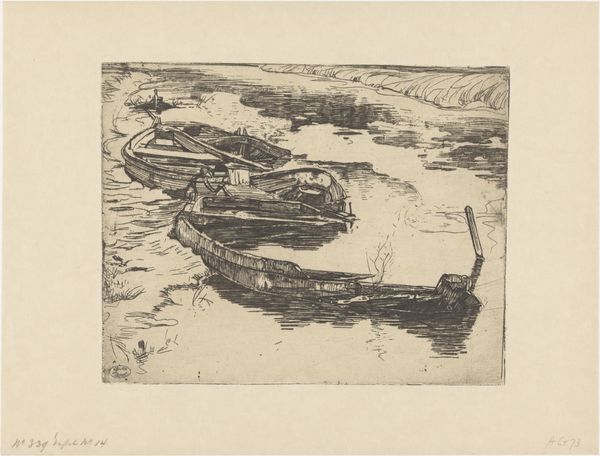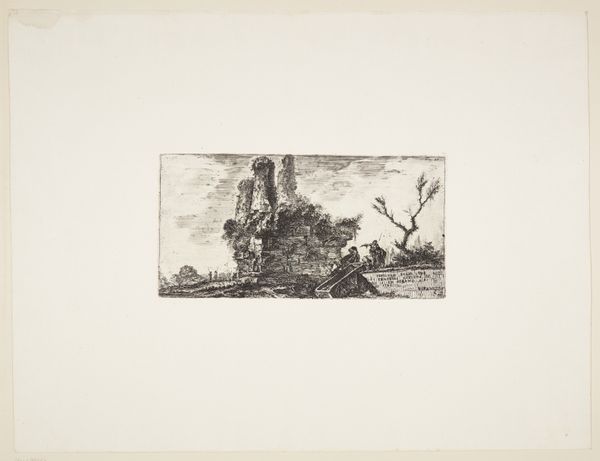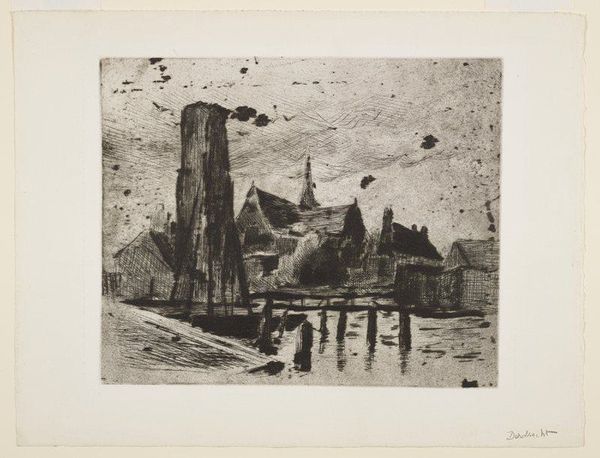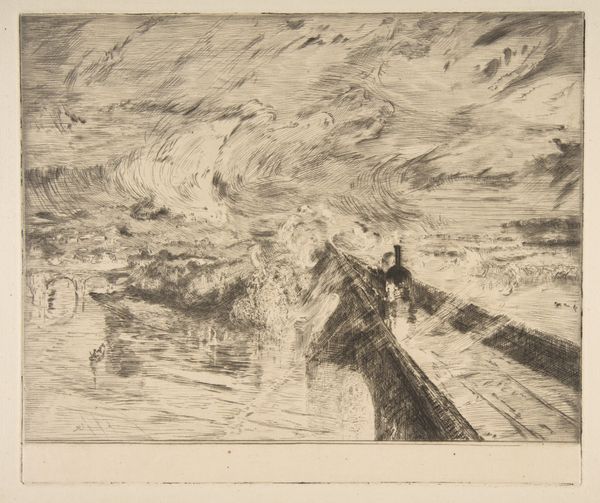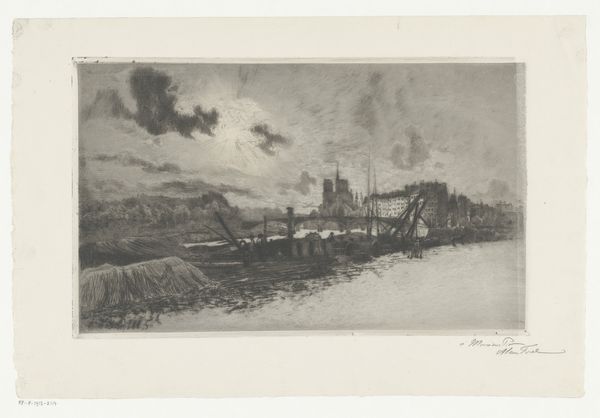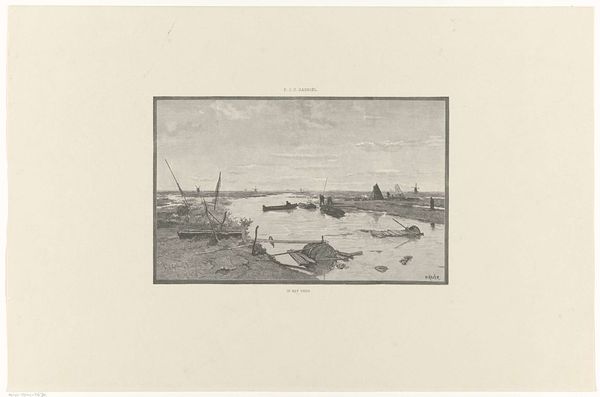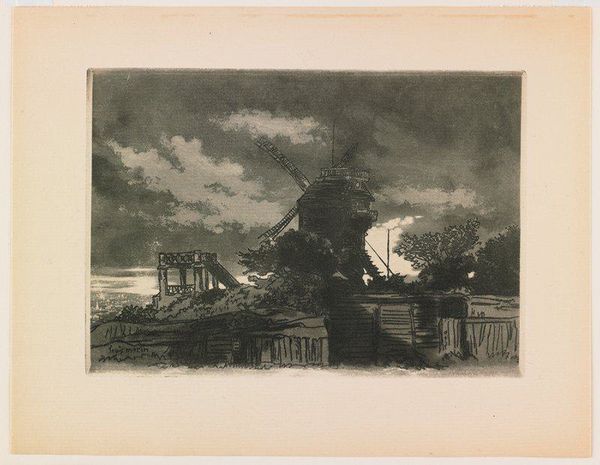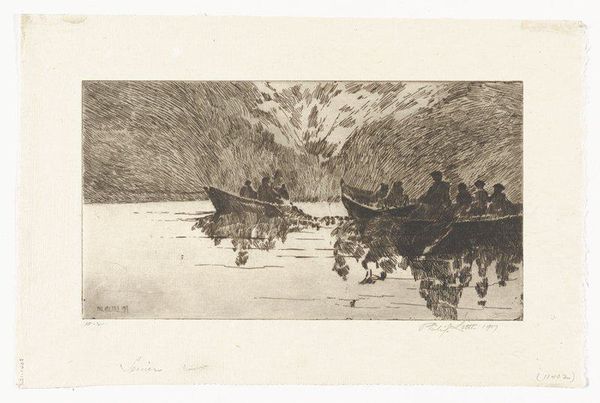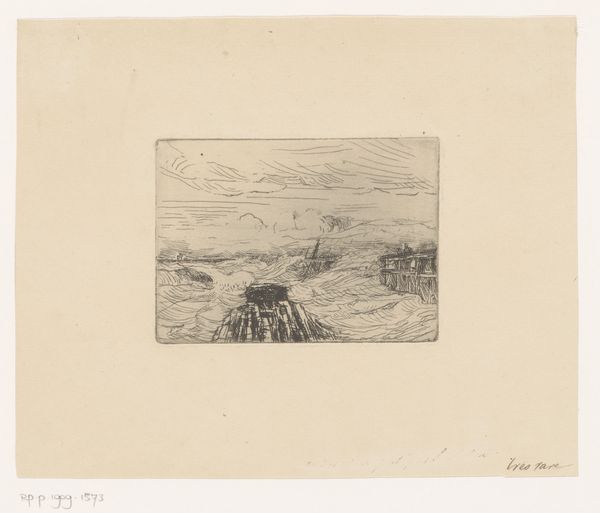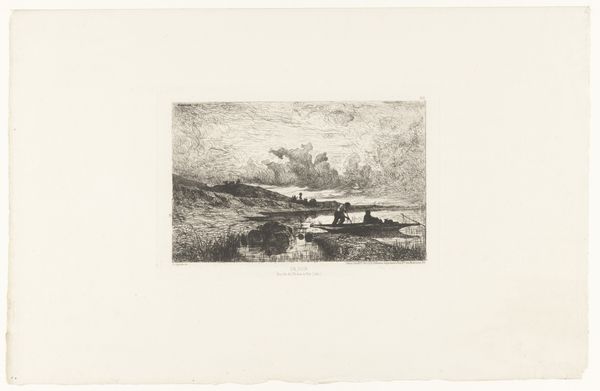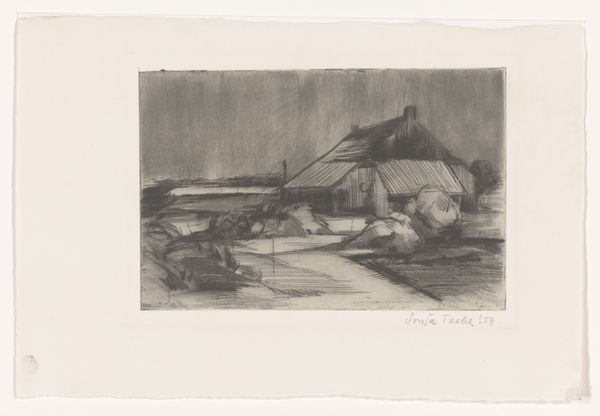
print, etching
#
ink painting
# print
#
etching
#
landscape
#
line
#
cityscape
#
realism
Dimensions: 7 7/8 x 9 15/16 in. (20 x 25.24 cm) (plate)11 3/4 x 15 1/4 in. (29.85 x 38.74 cm) (sheet)
Copyright: No Copyright - United States
Curator: Here we have Philip Little's etching from 1916, titled "Destroyer," currently held at the Minneapolis Institute of Art. It’s a rather stark and compelling cityscape. Editor: Stark indeed! My initial reaction is of immense industry, even unease. The plumes of smoke feel oppressive, dominating the composition. Curator: It's interesting you pick up on the smoke. If you examine the composition, Little employs a rather restricted tonal range. The blacks are dense and create a palpable sense of weight, anchoring the boats. Editor: Those boats! And they seem to belch that dark, almost monstrous smoke. Consider the symbolism—the smoke could represent industrial progress, yes, but also environmental degradation and even the specter of war. Curator: You raise a good point. The linear quality of the etching allows Little to build textures, especially in the water. Notice how the light plays off the surface, creating broken, fractured reflections. Editor: It’s a world on the cusp of massive change, visually and symbolically. There’s this older sailboat near the front, seemingly about to be engulfed by the looming new technology further away and pouring smoke out from a hidden source. We are given no figures. Just the starkness of industry at dawn? Curator: One might interpret the steamship and smokestacks as emblems of modernity encroaching on nature, a theme prevalent in art from this period. But if we are to talk about context, "Destroyer" emerged in the thick of the World War I. It suggests a landscape scarred by conflict. Editor: Absolutely. "Destroyer" can be perceived as a reflection of our cultural anxiety towards industry and modernity. Its use as a visual language is stark, yes, but effective at making a symbolic stance. Curator: Yes, and for me the true accomplishment lies in the mastery of the etching technique itself, the interplay between light and shadow creates a striking commentary on that era. Editor: Indeed, it prompts reflection on the price of progress, or rather it may reflect that the only possible path toward civilization comes with an environmental cost, as civilization destroys and scars. Thank you for a compelling overview.
Comments
No comments
Be the first to comment and join the conversation on the ultimate creative platform.



